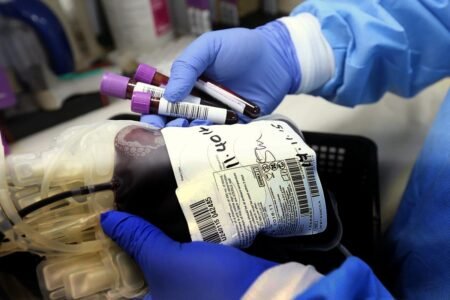Ranging from simple sticking plasters to the most sophisticated life-supporting machines, medical devices and in vitro diagnostic medical devices are central to our health and quality of life. To ensure that these devices serve the needs and ensure the safety of European citizens, the European Commission has proposed two Regulations which are fit for purpose, more transparent and better adapted to scientific and technological progress. The new rules aim to ensure that patients, consumers and healthcare professionals can reap the benefits of safe, effective and innovative medical devices. The medical device sector is highly innovative, particularly in Europe and has an estimated market value of around EUR 95bn.
Advertisement
What are medical devices and in vitro diagnostic medical devices?
They cover a huge spectrum of products, from home-use items like sticking plasters, contact lenses and pregnancy tests to dental filling materials, x-ray machines, pacemakers, breast implants, hip replacements and HIV blood tests. There are around 500,000 or more different types of devices on the market.Why are medical devices different from medicinal products?
Medical devices should not be mixed up with medicinal products (often referred to as pharmaceuticals) which are subject to a separate regulatory framework. The main difference between medical devices and medicinal products is the product’s principal mode of action, typically physical for a medical device (e.g. mechanical action, physical barrier, replacement of or support to organs or body functions …).
Why is the Commission proposing new rules?
There are several reasons why the Commission is proposing new rules for medical devices and in vitro diagnostic medical devices.
First of all, the existing EU legislation, dating back to the 1990s, has not kept pace with the enormous technological and scientific progress in the past 20 years and like every regulatory regime dealing with innovative products it needs regular revision.
Moreover, EU Member States interpret and implement the current rules in different ways which leads to different levels of patient and public health protection in the EU. It also creates obstacles to the single market and thus reduces the benefits economic operators could reap from one of the main objectives of European integration.
Currently, it is not always possible to trace medical devices and in vitro diagnostic medical devices back to their supplier. New rules on traceability are therefore needed.
Last but not least, patients, healthcare professionals and other interested parties do not have access to essential information on how medical devices and in vitro diagnostic medical devices have been assessed, and what clinical evidence there is to show they are safe and effective. Greater transparency is needed.
Recent events such as the scandal about fraudulent silicone breast implants and the problems occurring with certain metal-on-metal hip joint replacements have brought the above mentioned issues to the attention of the public at large. The Commission proposes a robust and transparent regulatory framework with the necessary instruments for a sustainable, effective and credible management of the system.
Are the Commission proposals a response to the PIP breast implants scandal?
The Commission had been working on the revision of the medical device legislation before the PIP scandal occurred. However, the Commission has carefully analysed the PIP scandal in order to ensure that the proposals are robust enough to avoid such problems happening again.
What are the main changes proposed by the Commission?
The Commission proposes important changes regarding various aspects relevant for the life-cycle of medical devices, such as the scope of the legislation, the pre-market assessment of devices, their control once on the market, the transparency of data concerning marketed devices and the management of the regulatory system by the authorities. The main changes in detail are:
Wider and clearer scope of EU legislation, extended to include, for example, implants for aesthetic purposes, and clarified as regards genetic tests;
Stronger supervision of independent conformity assessment bodies (so called ‘notified bodies’) by national authorities;
More powers for notified bodies vis-à-vis the manufacturers, to ensure thorough testing and regular checks, including unannounced factory inspections at manufacturing sites;
Clearer rights and responsibilities for manufacturers, authorised representatives, importers and distributors, including in the case of diagnostic services and internet sales;
Extended database on medical devices (Eudamed), providing comprehensive and public information on products available on the EU market;
Better traceability of devices throughout the supply chain, enabling a swift and effective response to safety concerns (e.g. recalls);
Reinforced rules for clinical investigations on devices and the required clinical data for the pre-market and the continuous post-market assessment of medical devices, including in vitro diagnostic medical devices.
Adaptation of the general health and safety requirements, including labelling provisions, to the technological and scientific progress.
Introduction of classification rules that divide the broad range of in vitro diagnostic medical devices into four different risk classes as it already exists for other medical devices.
Creation of a Medical Device Coordination Group composed of members representing national competent authorities in the field of medical devices to ensure better coordination between Member States, with the Commission providing the necessary scientific, technical and logistic support.
What about medical devices and in vitro diagnostic medical devices imported from outside the EU?
Medical devices and in vitro diagnostic medical devices produced in a third country and imported into the EU are subject to the same rules as medical devices produced within the EU.
The Commission is actively involved in initiatives for international harmonisation in the field of medical devices and in vitro diagnostic medical devices such as the former Global Harmonization Task-Force and the new International Medical Device Regulators Forum. The Commission proposals incorporate guidelines developed at international level into EU law with a view to converging the regulatory requirements for medical devices and in vitro diagnostic medical devices in major economies.
What are the next steps?
The Commission proposals will be discussed in the European Parliament and in the Council. They are expected to be adopted in 2014 and would then gradually come into effect from 2015 to 2019.
Source: European Commission






